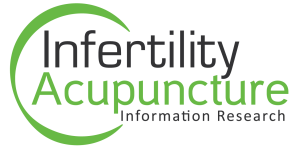
Acupuncture has been shown to increase the uterine blood flow (decreasing uterine blood impedance). But does this boost to blood flow really matter when you’re having an IVF? This study below provides the answer. The researchers utilised specialised ultrasound method to assess uterine blood flow. They discovered that it had an immense effect on both pregnancy and implantation rates. IVF with women, who had the lowest blood flow below a certain level on the day of transfer, unfortunately didn’t result in any pregnancies.
In this study the blood flow is referred to as uterine blood flow impedance and pulsatility index(PI). The higher the impedance and PI, the lower the blood flow. None of the women who had PI value above 3 conceived.
Fertil Steril. 1992 Feb;57(2):372-6.
The use of transvaginal color flow imaging after in vitro fertilization to identify optimum uterine conditions before embryo transfer.
Steer CV1, Campbell S, Tan SL, Crayford T, Mills C, Mason BA, Collins WP.
Author information
Abstract
OBJECTIVE:
To assess whether a measure of uterine blood flow impedance (the pulsatility index, PI) as determined by transvaginal ultrasonography with color blood flow imaging, may be used to assess endometrial receptivity immediately before the time of embryo transfer (ET) after assisted conception.
DESIGN:
A prospective study of infertile women who had undergone treatment to induce multiple follicular development followed by ultrasound-guided oocyte retrieval. The oocytes were fertilized in vitro.
SETTING:
The Hallam Medical Centre.
PATIENTS:
Eight-two women (22 to 44 years of age) who all had three or four good quality embryos available for transfer to the uterus.
INTERVENTIONS:
All women were examined by transvaginal ultrasonography, with color flow imaging and blood flow analysis, immediately before ET.
MAIN OUTCOME MEASURES:
The mean PI of the left and right uterine arteries, the pregnancy rate (PR) (%), the embryo implantation rate (%), and the multiple PR (%).
RESULTS:
The patients were grouped according to whether the PI was low (1.00 to 1.99), medium (2.00 to 2.99), or high (3+). There were 27 women in the low PI group, 36 in the medium, and 19 in the high. The PR (%), embryo implantation rate (%), and multiple PR (%) were 41%, 15.3%, and 27.3% for the low PI group and 47%, 22.2%, and 47.1% for the medium PI group. There were no pregnancies in the high PI group. Thus 35% (19/54) of women who failed to become pregnant had a PI value greater than 3.0.
CONCLUSIONS:
These data suggest that the PI value on the day of ET could be used to: (1) increase the implantation rate by showing which embryos should be cryopreserved until the uterus is more receptive and (2) reduce the multiple PR by indicating that the number of embryos transferred should be limited when the uterus is most receptive.
PMID: 1735490 [PubMed – indexed for MEDLINE]
